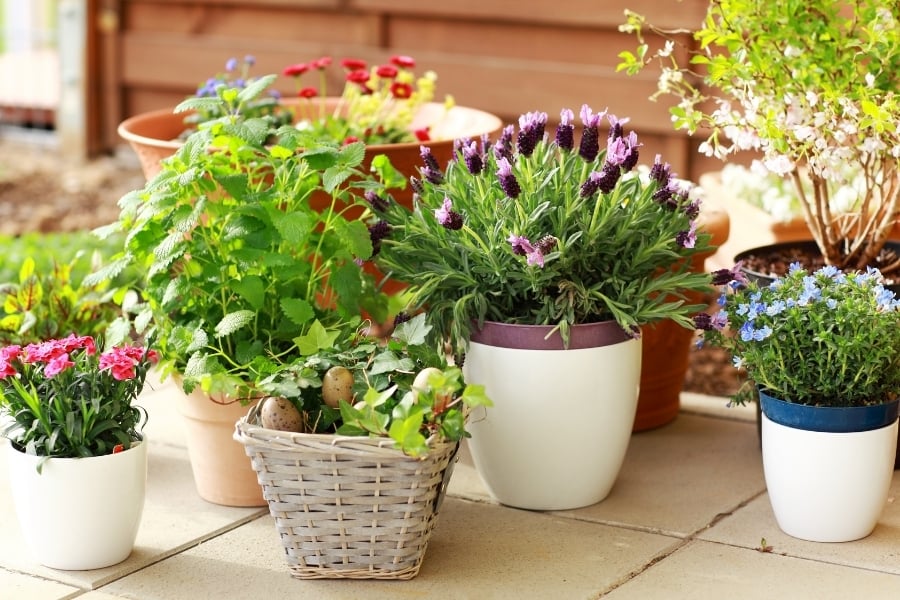Looking to grow or start your container garden but not sure what size pot to get?
Choosing the correct pots for plants can be stressful, especially when you are a newbie. Usually, nurseries provide the first pot your new green baby goes home in, often in plastic pots or clay pots. But this is not the best home for your plant and will eventually kill it.
- What pot size does my plant need?
- How are plant pots measured?
- What rules should I follow to find the right pot size?
- What are standard planter sizes?
- What size pot do I need for popular plants?
- Does plant pot size affect plant health?
- When do I need to re-pot my plant?
- Does my plant pot need drainage?
- Clay pots vs plastic pots and fiberglass pots.
- Custom plant pot sizes
What pot size does my plant need?
As you and your plants have to live with your choices, it’s best to consider the requirements for planting before shopping. Choosing the right pot sizes is important for a number of reasons:
Reason 1: Plant growth
With the correct pot measurements, the pot creates the right conditions to allow your plant’s roots to spread out, which means that they’re much less likely to run into problems with root rot or other issues caused by poor air circulation.
Reason 2: Planning
Pots take up space, so before you buy, consider where you will put your pots. The last thing you need is to find out that your planter choices do not fit in their planned locations. You have to plan how wide and tall the containers will be.
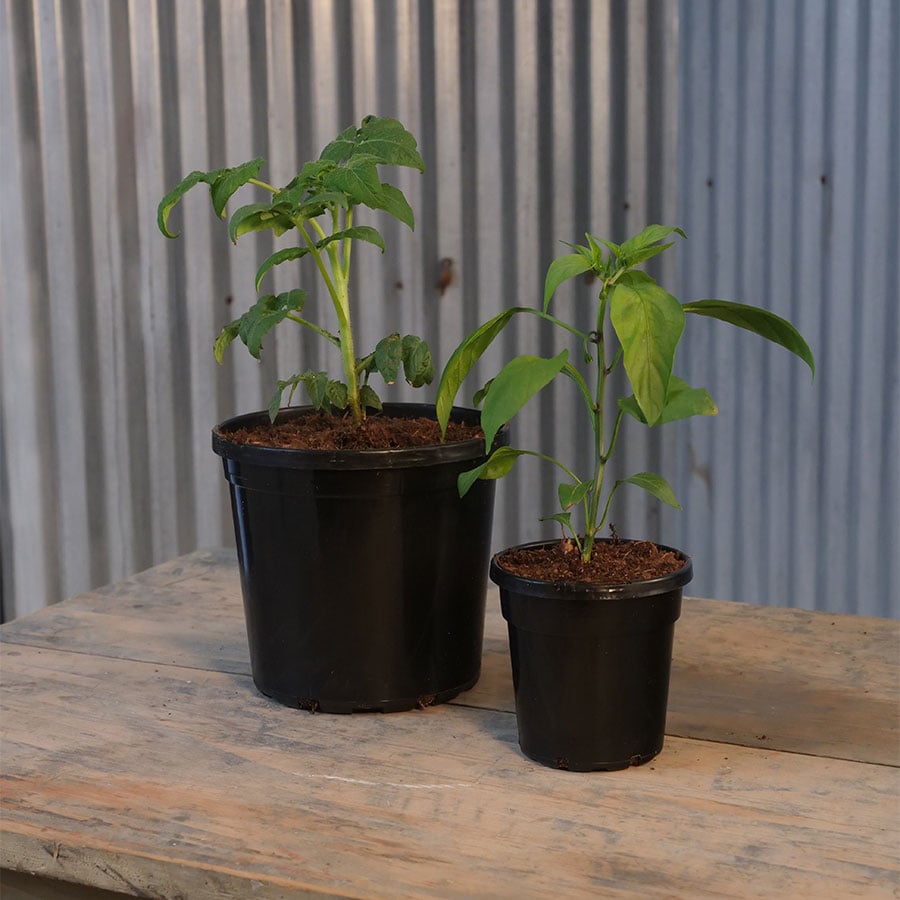
Reason 3: Decor
Various sizes of planters fit different decors. The pot size you choose has to suit the aesthetic design that you are after. Larger plant pots may not suit indoor locations but look totally at home in the garden.
Reason 4: Price
Like most things with gardening, the best container sizes are usually partly about what works for you and what you can afford to buy. The larger the container, the higher the cost.
How are plant pots measured?
Pot size is generally measured in inches or gallons in the USA, or liters and centimeters in other parts of the world. Inches refers to the pot diameter, whereas gallons are used to indicate container volume.
Pot size increases in increments of 1 to 2 inches, or one gallon, at a time. A one-gallon container has about 7-8 inches pot diameter at the top, but this varies depending on the style and shape of the container.
The plants themselves are sometimes referred to in terms of inches or gallons – this is the measurement of the actual pot, for example, a 12” plant means that it needs a 12” diameter pot, or a pot that is usually 4 to 5 gallons.
What rules should I follow to find the right pot size?
Generally, you should choose a pot size that is twice the width and depth of the root ball. This is the collection of roots below the surface. Another technique is to get a pot that is one-third the diameter of the canopy spread.
Always ask your local garden center or nursery for the most expert gardening advice on specific plant varieties. Common pot sizes are mostly for small plants but it may depend on the pot manufacturers. Here is a rough guide to the most common requirements that can help you with your gardening:
What are standard planter sizes?

What size pot do I need for popular plants?
This section breaks down each pot size into inches, gallons, and how much soil is needed for different types of plants!
Planter Sizes for Citrus Trees
A small pot is great for citrus trees, as long as it has adequate drainage holes. A 10-inch or 12-inch diameter round pot with a depth of 8 to 10 inches would be ideal. In places where drainage is not as good, the pot should have a slightly larger volume, but avoid very large pots for citruses as this can lead to root rot.

If you are growing large trees, make sure to get a pot with enough depth for root growth. A 20-inch depth and diameter planter is really the minimum size a tree will accept and will allow room for growth for about two years before root pruning is needed.

Planter Sizes for Flowers and Herbs
Tall flowers in medium containers (12″ – 20″) can create a wonderful focal point in rooms and gardens and without being too big or too small for the plant.

When it comes to herbs, choose a container that’s at least 6″. Herbs require well-drained soil, so it’s best not to use anything too small. Plus larger container = a whole crop can be planted.
Planter Sizes for Cacti & Succulents
The container should be about the same size as your cactus with an extra 2″ to spare. Succulents are similar because they have shallow root systems so do not choose containers that are too deep or wide.

Planter Sizes for Vegetables
Most garden vegetables do best with deep pots that are generally 14 to 24 inches in size. Vegetables such as leaf lettuce, cabbage and peas tend to need a lot of room in the pots to grow roots.Be mindful of this, especially when you are container gardening.

There are several reasons why you need deep pots for vegetables. One of the most important is that it allows for a deep root system, which makes them healthier and stronger. Also, a deep pot will allow more room to grow flowers or stems above ground level, resulting in a tastier crop!
Planter Sizes for House plants
When you are growing indoor plants, generally anything will do. Using small pot sizes from around 4 to 10 inches is more convenient for shelves and tabletops while sizes 12″ and above are great for floor-standing planters.

Planter Sizes: Plants from seedlings
For new plant seedlings that do not need to be potted into larger plant pots just yet, you can use pot sizes as small as 2 to 4 inches. This is generally the size that nurseries use.
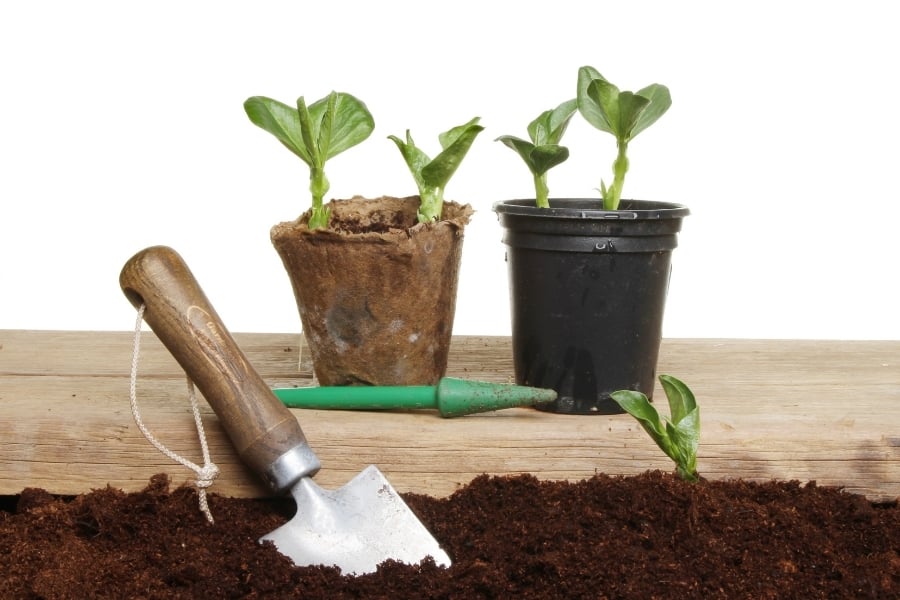
Keep in mind that these will need to be transplanted into a larger pot as they grow.
Planter Sizes for Shrubs
You will need a pot that has a depth and diameter between 16 to 20 inches for most shrubs. This can vary depending on the size of the shrub. For larger shrubs, it is best to look at a pot that has a depth of up to one-third of the height of the plant and a diameter about twice as wide as its height.
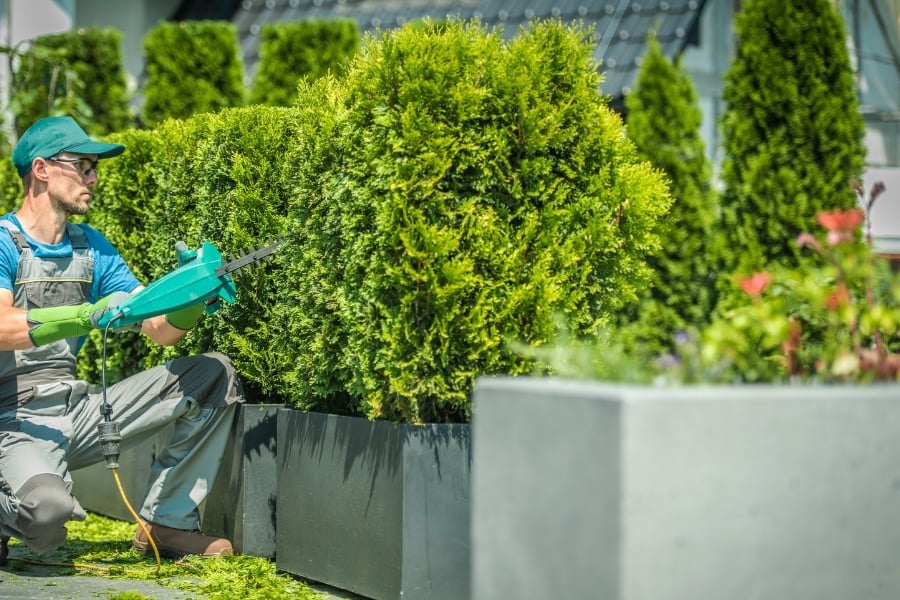
Does plant pot size affect plant health?
Yes absolutely! If the container is too big for the plant, the roots of your plant will not be able to reach the bottom, and the water can pool resulting in root rot. A bigger container is also a waste of resources, water, and space in your garden or nursery.

If the planter is not big enough for the plant, the plant might have roots that get too crowded. This can make it grow slowly or not at all. If you have larger plants, they might fall over if their pots are too small. If a small size pot is used for a large plant, it will be difficult for the plant to get more nutrients from the soil.
When do I need to re-pot my plant?
As your plants grow, you’ll need to move them from the current size to larger containers every 12 to 18 months to a pot that’s 2 to 4 inches larger. You may need to get bigger pots than your common pot sizes. Remember to ask the nursery for repotting advice when you buy your plant!
Large trees
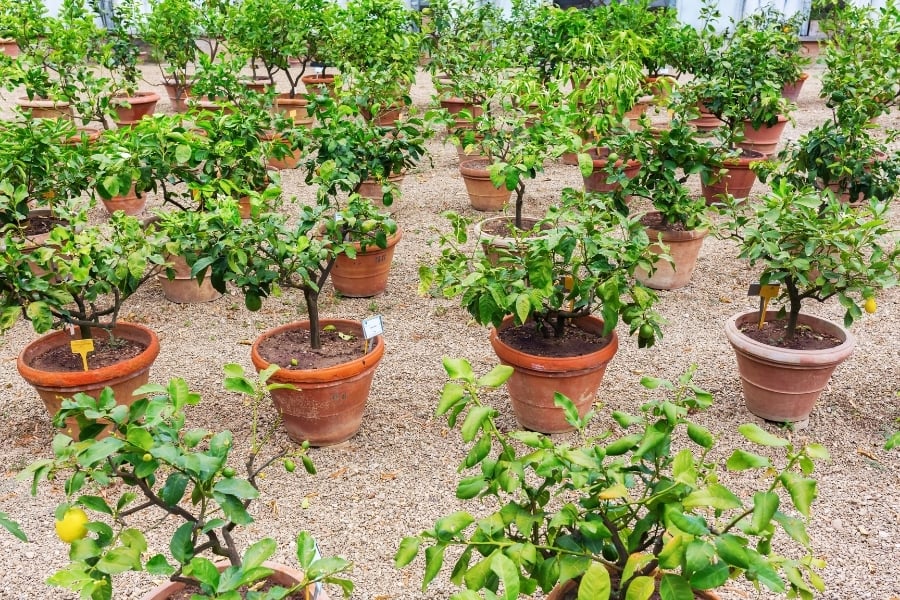
Does my plant pot need drainage?
Having drainage is critical for your beautiful plants. Some plants don’t need drainage, however, the minimum amount of water may vary for each plant but it is better if the soil is moist. Do not overwater as this leads to withering of the plants whether in the pot, the garden, or the nursery.
Without drainage, it is easy to overwater the plant. If the pot does not come with a drainage hole, you can make a little hole at the bottom of the pot as an outlet for the water. Here’s how to manage your planters without drainage holes.
Clay pots vs plastic pots and fiberglass pots.
The pot material is a big consideration too. While plastic pots are light, flexible and colorful, they have a tendency to become brittle over time, especially if the plastic pot is black. Black also absorbs more heat which may affect the plants. Clay pots on the other hand can protect the plant from sudden changes in temperature and are not easily blown away.

Fiberglass is the best of both worlds. Made from light, durable, and weather-resistant material, fiberglass is the material we stand by. Take a look at our guide to planter materials and why fiberglass is the best.
Related article: Composite planters: different types and why you should choose the materials.
Custom plant pot sizes
While most people may not realize this, common pot sizes are not always the best solution.
There are a number of reasons why custom plant pot sizes are a great option for growers.
If you have a specific size plant pot in mind, a specific project you need exact dimensions for, or if your plants need a very specific soil depth to thrive, it’s worth the effort to make sure that they’re housed in the best possible way.
Soil
Custom plant pot sizes allow you to fine-tune the soil volume in order to get exact levels of moisture and nutrients, so that your plants will be healthier than ever before.

If you are planning to grow trees in pots, they really benefit from a deep soil volume in order to ensure that their roots stay below the surface and have a good hold.
Set yourself apart
Custom options mean that your pots can be just as ornamental as your beautiful plants. When you get creative with your custom designs, it’ll add interest to any garden space.
If you are a wholesaler of landscaping supplies, having a range of custom planters really sets you apart from the competition. No client wants to have something generic!
Make sure it’s perfect
With the right plant pot size measurements, you can guarantee there will never be any buyers remorse. Getting exactly what you want is worth the time and investment to take a few measurements.
To understand the dimension requirements of your planter You will need to measure the location you want the planter to sit, taking into account the height, width, and length of your intended planter.
Take a look at our advice on ordering custom planters to see what you need to do to get the right requirements for your project.
Pot size is just one factor in determining the best pot for your plant. Take a look at our guide to delve a little deeper into the planters conditions that affect plant health.
Curious about what makes our reputation? Take a look at how our flower pots are made and why we choose to manufacture in Vietnam.
